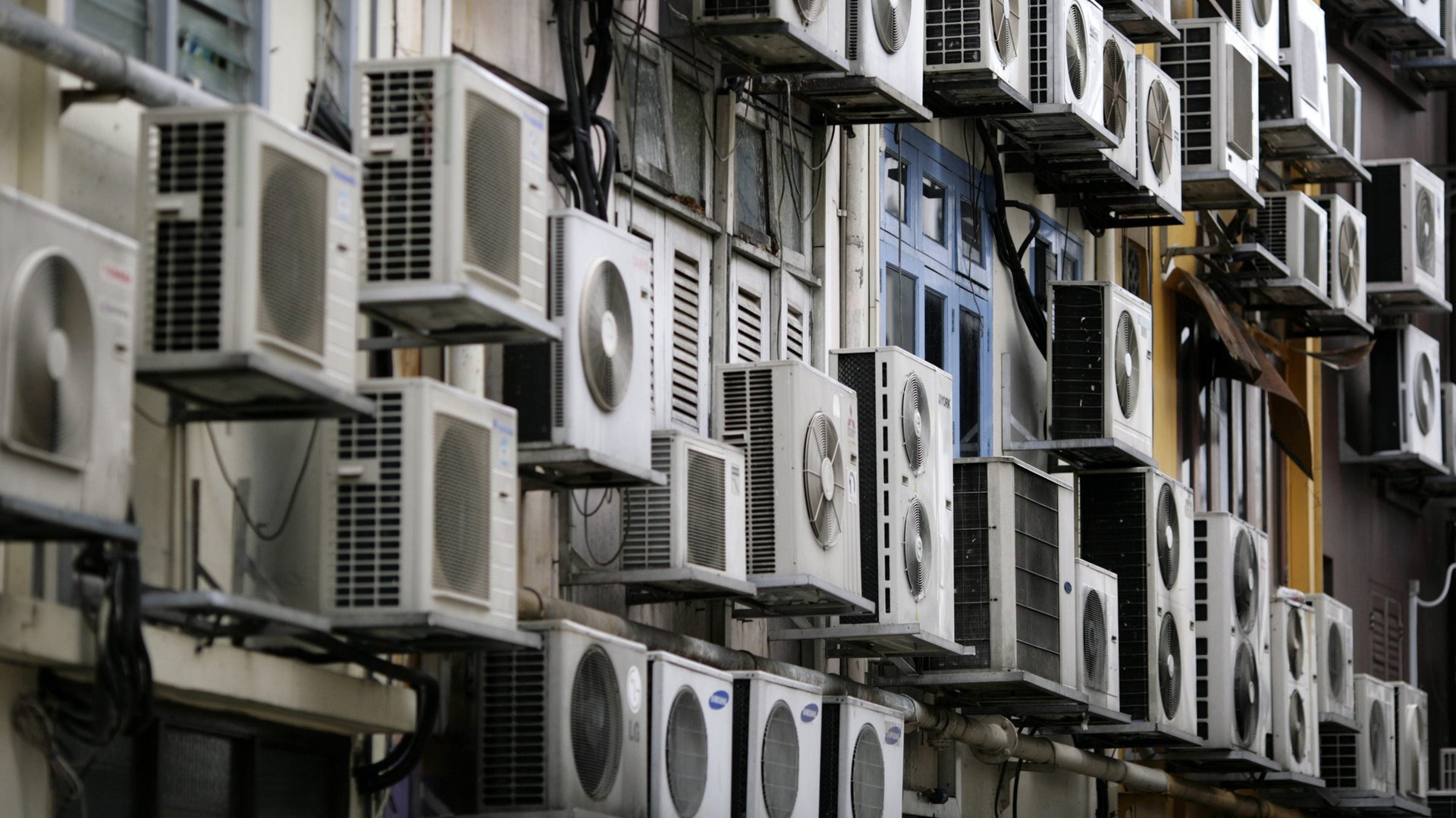A government-owned firm starts selling India’s most energy-efficient air conditioner
Air conditioners sales in India have been growing in double digits since 2015 as summers get hotter each year. But these appliances also add to the problem they are fighting.


Air conditioners sales in India have been growing in double digits since 2015 as summers get hotter each year. But these appliances also add to the problem they are fighting.
Coolants used in air conditioners are powerful greenhouse gases that contribute to rising global temperatures.
Now, Energy Efficiency Services Limited (EESL), a government enterprise, has launched India’s most energy-efficient air conditioner in a bid to reduce emissions and keep the country’s ever-rising electricity demand in check.
The new “super-efficient” model has been developed by Voltas as the Mumbai-based manufacturer had made the lowest bid for EESL’s tender to buy 50,000 air conditioners for a pilot that will run in New Delhi, the state-run firm’s managing director Saurabh Kumar said.
EESL will spend around Rs190 crore ($28 million) on this project, which is partially funded by development grants from the Asian Development Bank and the Global Environment Facility.
In comparison to the most commonly used models, “it is expected that deploying (EESL’s) 50,000 air conditioners would save 145.5 million kilowatt-hours of electricity (about Rs120 crore) per year, mitigating around 120,000 tonnes of carbon dioxide annually,” EESL said in a statement.
Peak hour electricity demand in Indian cities is touching new highs. On the afternoon of July 1, New Delhi broke its own record, set last year, after peak demand rose to 7,241 megawatts. Most of the new load in urban areas is due to the installation of air cooling systems, said Soumya Garnaik, EESL’s chief general manager of technology.
Air conditioners have long been considered a luxury product in India. While the vast majority of the population in the US and China has access to these devices, less than 10% of Indians use them. But that number is rising quickly.
Meanwhile, Indian manufacturers have found it easier to develop high-efficiency products when the demand comes in the form of bulk purchase deals such as from EESL.
But now it is upon the state-owned firm to sell the air conditioners it has bought from Voltas. To offer the cooling devices directly to consumers in New Delhi, EESL has launched its own e-commerce website, eeslmart.in.
Build it and they’ll come?
The listed price of the EESL’s air conditioner, a split inverter model with a cooling capacity of 1.5 tonnes, is Rs41,300. According to Kumar, the firm expects to sell the first 50,000 units by December, after which it plans to invite bids for another 200,000 units and sell them over the next year.
The price makes the air conditioner competitive with similar designs from other manufacturers, said HS Bhatia, managing director of Pluss Digital Ventures, a surplus inventory e-tailer. However, “it has come a bit late, given that the peak summer season is already over. In the off-season, prices of air conditioners generally drop by around 10-15%, depending on the unsold inventory of manufacturers,” he added.
India grades household electrical appliances on a scale of one to five stars depending on their energy efficiency. EESL’s air conditioner has the highest possible rating of five stars. However, considering a rate of Rs8 per unit of electricity and annual usage of 1,600 hours, the new model can shave off as much as Rs2,400 from a consumer’s annual electricity bill, compared with an existing five-star-rated air conditioner, Kumar said.
But “even today, the share of consumers in India who actually look at the star rating of the air conditioner and then make the buying decision is very small,” said Anil Pillai, director of Terragni Consulting, which focuses on consumer behaviour. “They look at mainly the upfront cost. Even dealers push the lower-priced product and downplay the impact of star ratings on electricity bills.” Further, due to an unfavourable perception of state-run services, consumers would have a mental block against buying from a government website, he added.